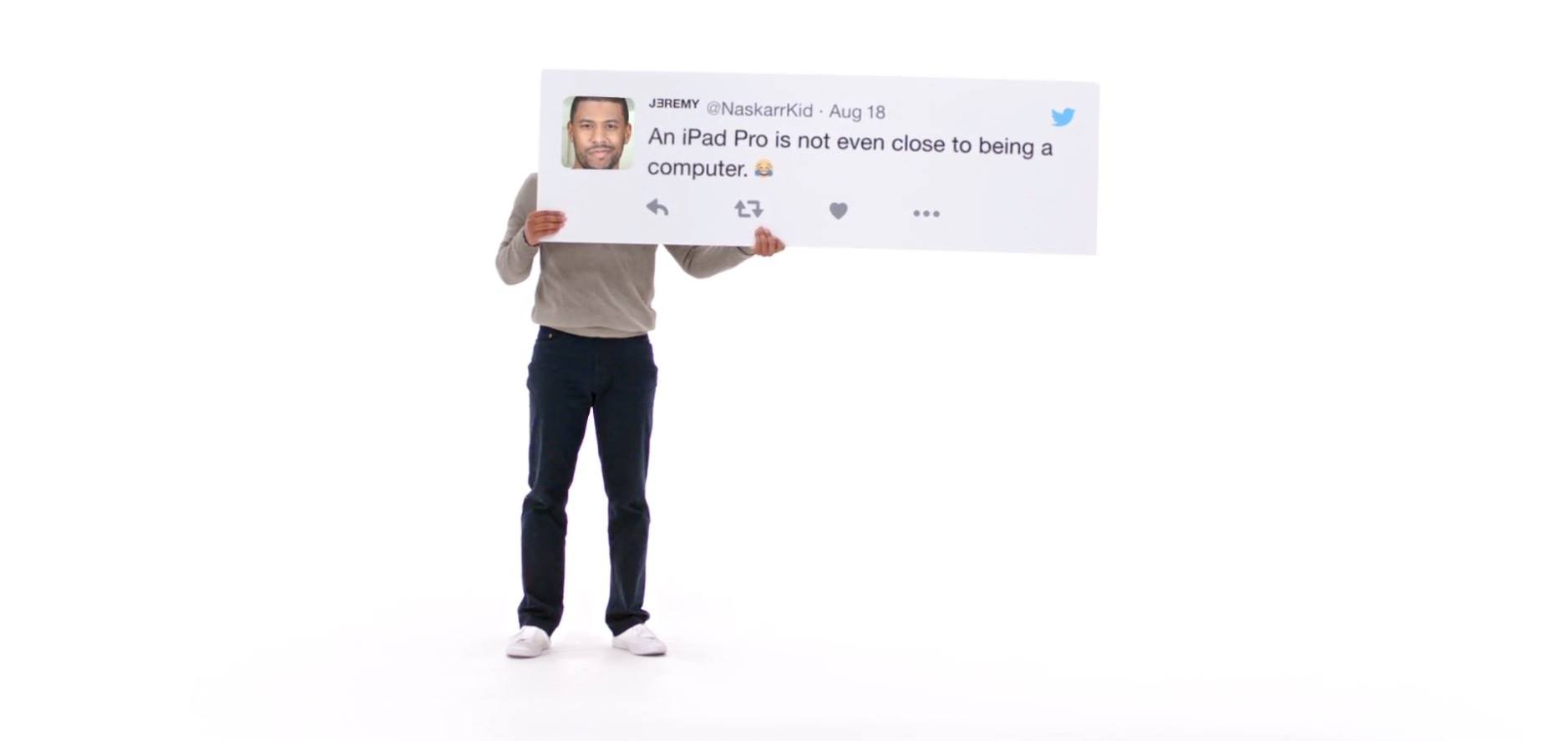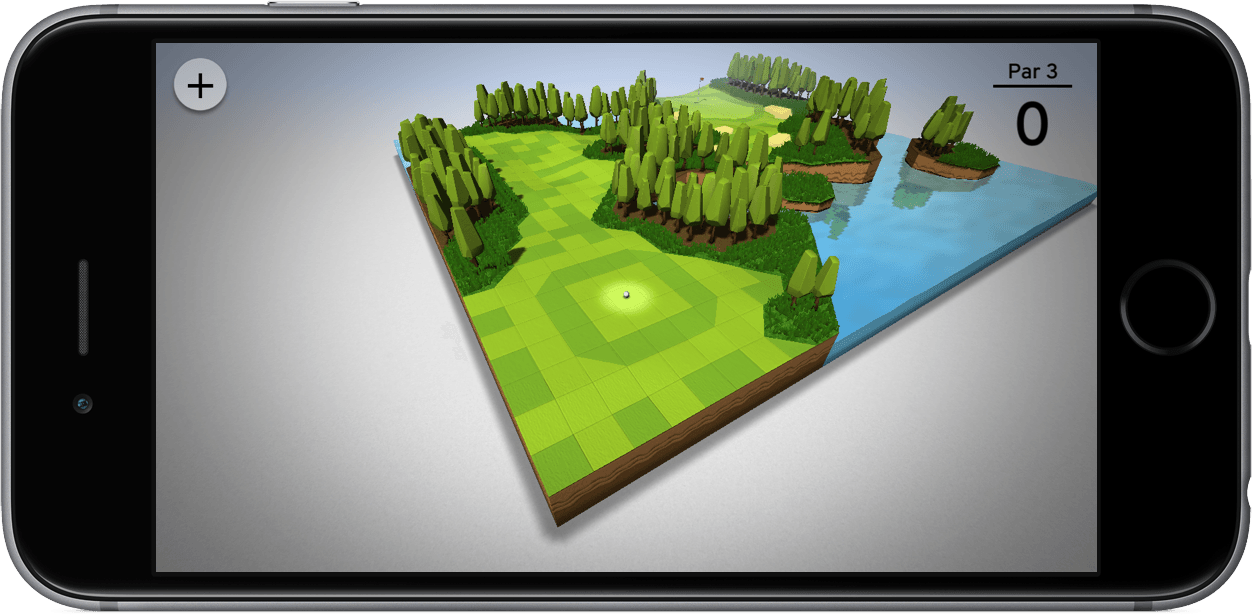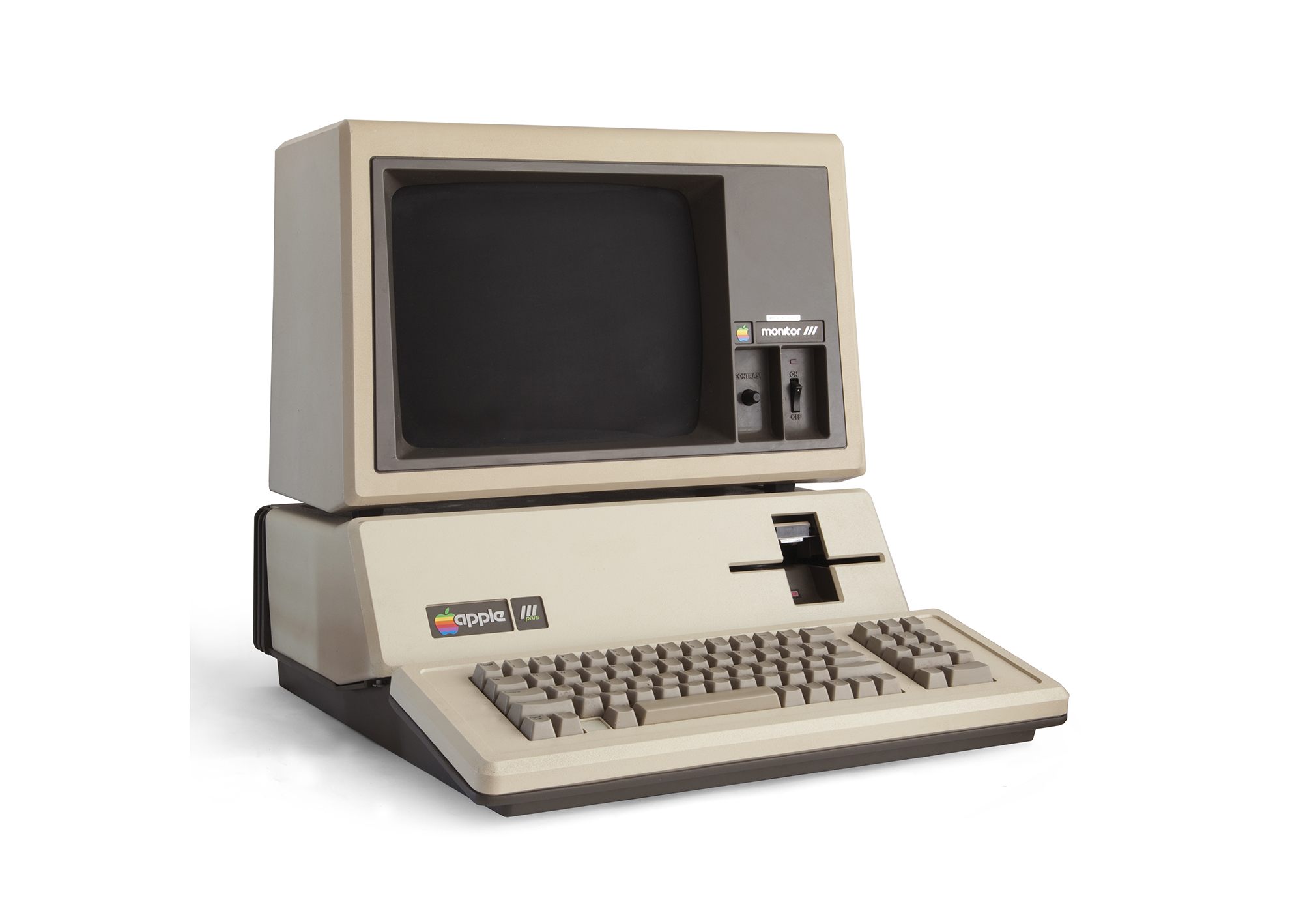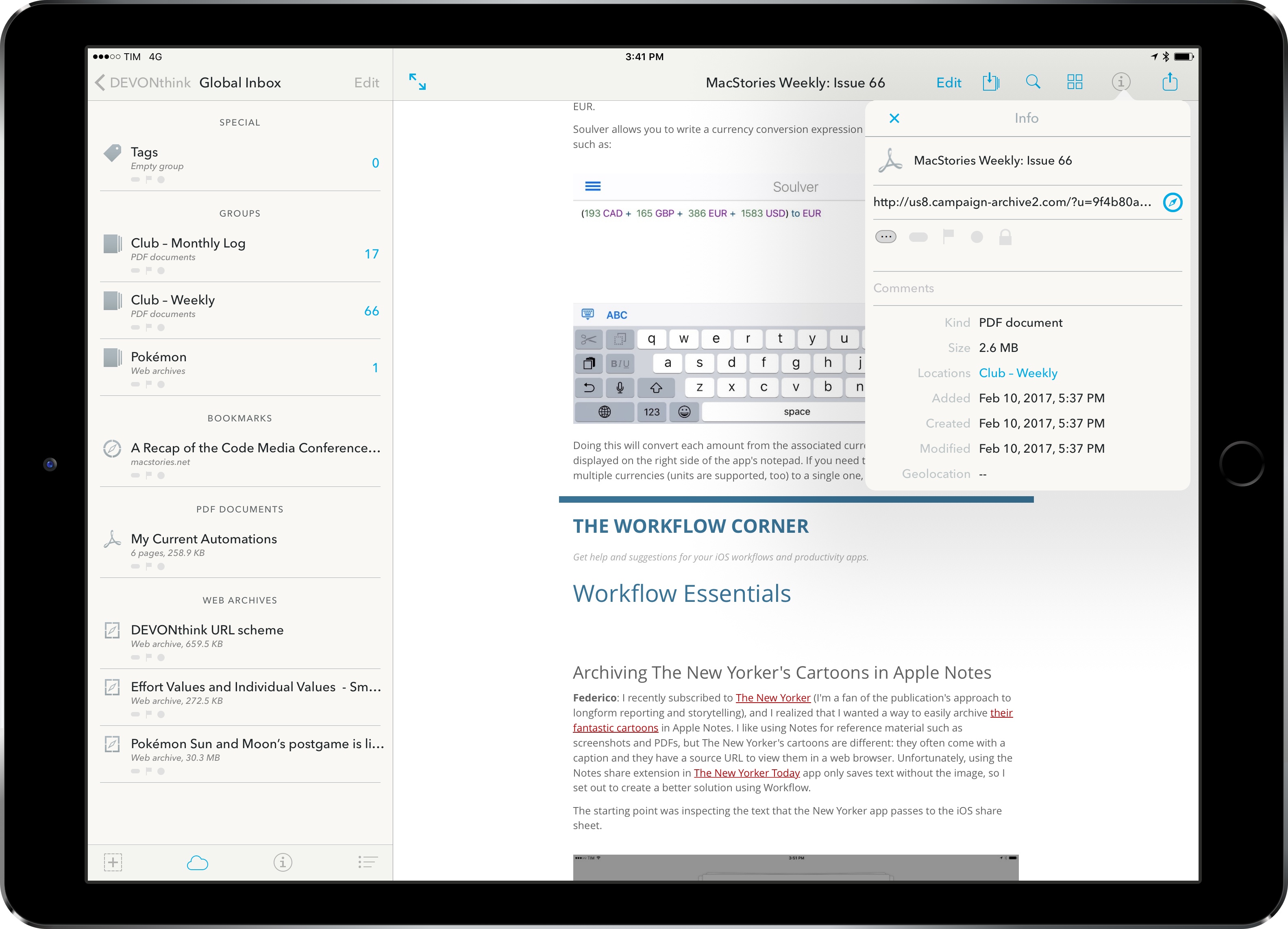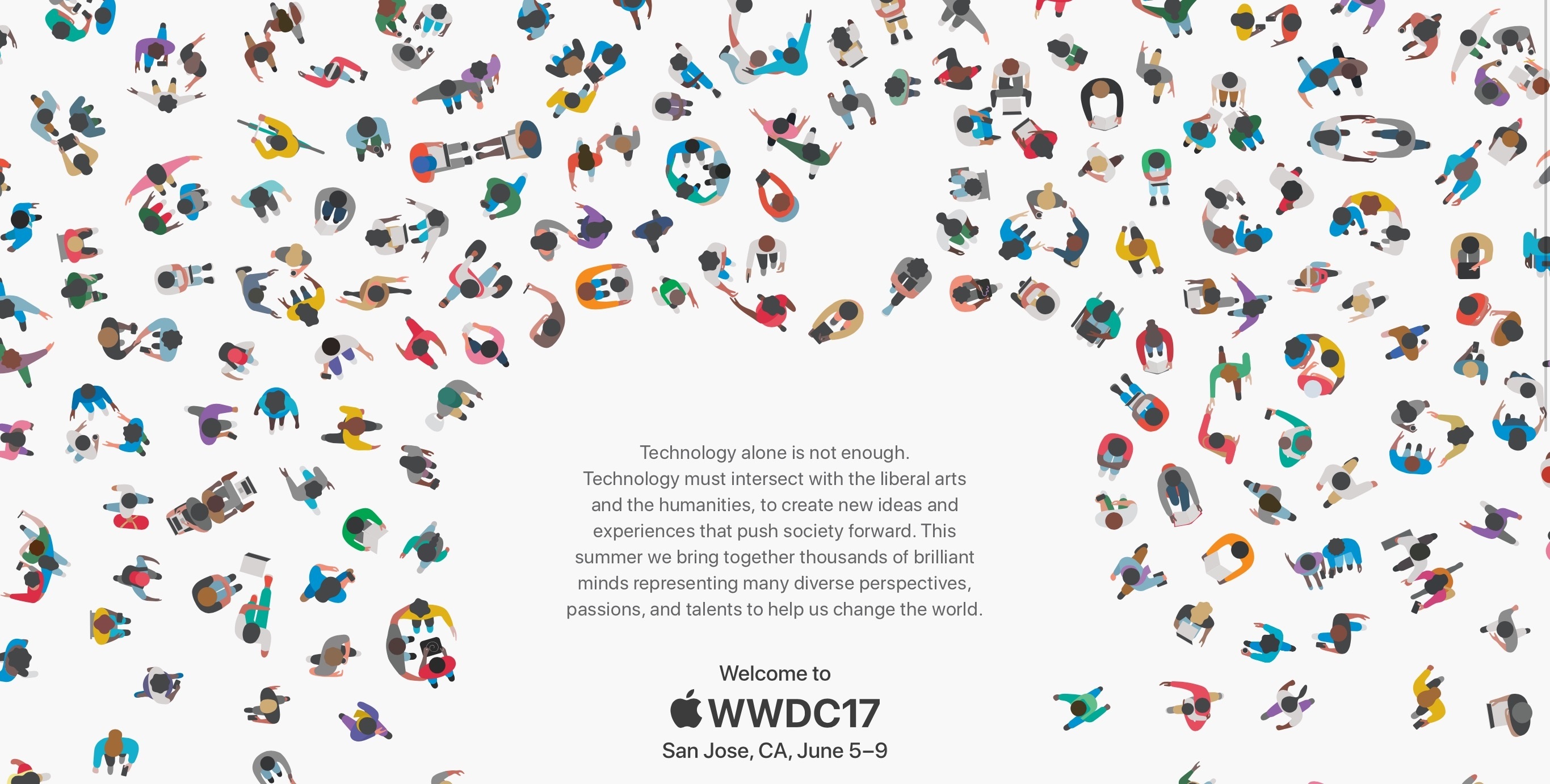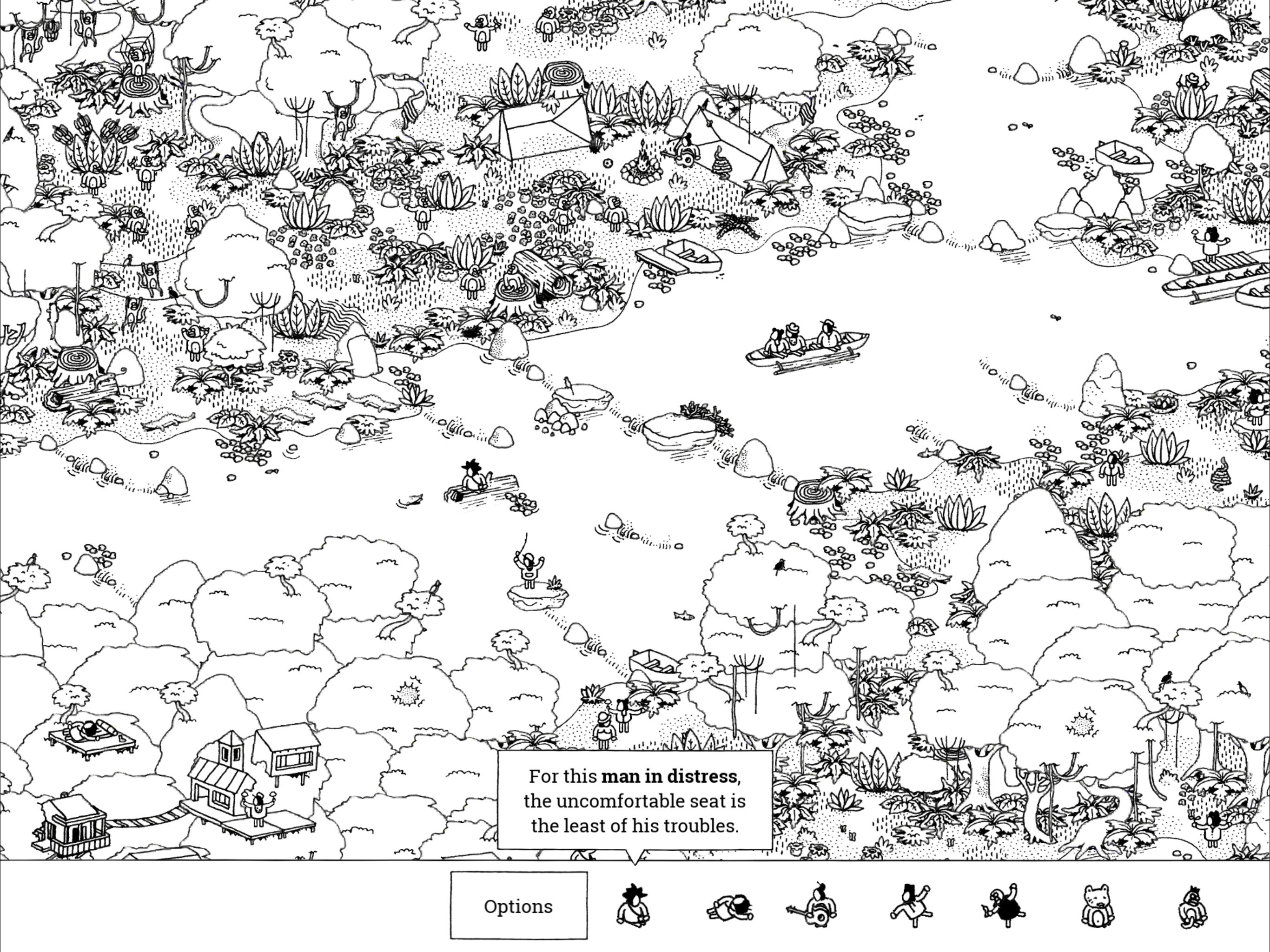Apple released four 15-second commercials each promoting different features of the iPad Pro. All four open with an actor holding up a large image of a tweet. ‘Better Than a Computer’ opens with the snarky tweet: ‘An iPad Pro is not even close to being a computer.’ The narrator agrees explaining that it’s not a computer because it’s faster, has LTE, and a touchscreen you can write on, concluding that the tweeter is ‘kinda right.’
‘Don’t Hunt for WiFi’ features a young woman stuck studying at a gym because her home WiFi is slow. The narrator explains that with LTE, that’s not a problem for the iPad Pro.
‘Do More with Word’ answers the question ‘Is Word on the iPad?’ The narrator shows how to download Microsoft Word and highlights its Apple Pencil integration.
The final spot called ‘No PC Viruses’ highlights the fact that the iPad Pro doesn’t suffer from PC viruses in response to a woman who complains on Twitter that her PC is infected.
What’s best of all about these spots is that the tweets are real. For example,
You can watch all four videos after the break:


